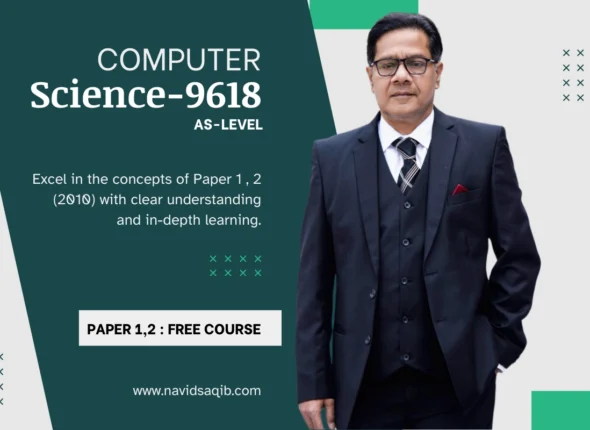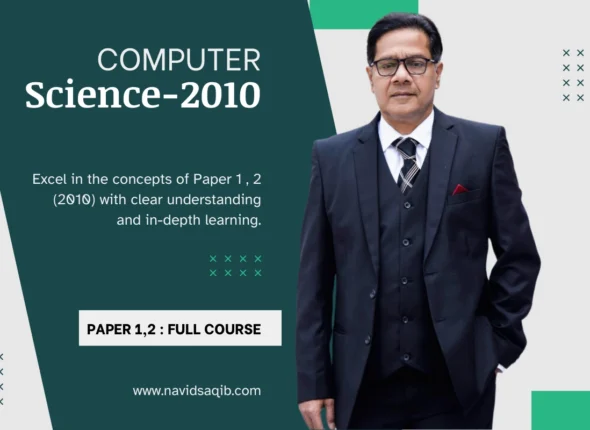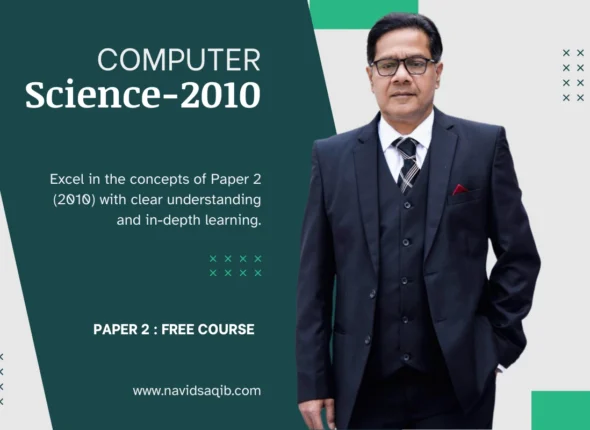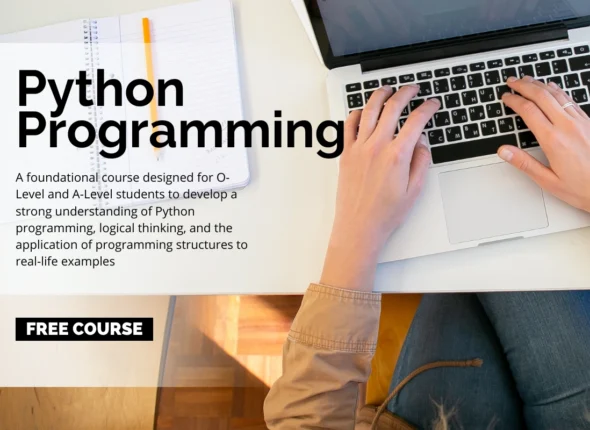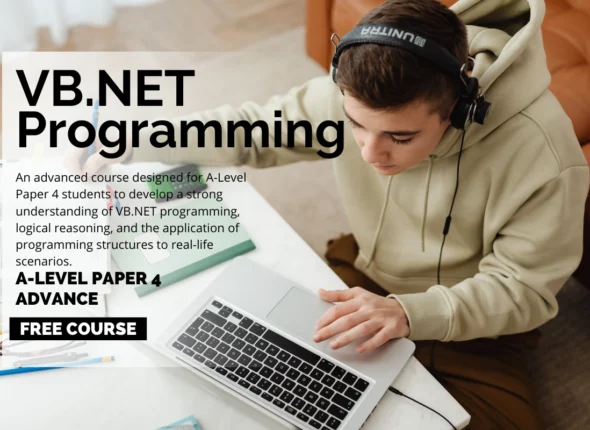Currently Empty: $0.00



Cambridge AS Level Computer Science (9618) – Course Description
Overview of AS Level Assessment
-
The AS Level comprises two externally assessed written papers, each carrying 75 marks and constituting 50% of the AS Level (and 25% of the full A Level if continued)
-
No calculators are permitted in any paper
-
Paper 1: Theory Fundamentals
-
Duration: 1 hour 30 minutes, 75 marks.
-
Covers Sections 1–8 of the syllabus
-
-
Paper 2: Fundamental Problem-solving and Programming Skills
-
Duration: 2 hours, 75 marks.
-
Focuses on Sections 9–12, emphasising algorithmic problem solving and pseudocode
-
Syllabus Content Mapped to Papers
Sections 1–8: Theory Fundamentals (Paper 1)
-
Information Representation
-
Data representation, graphics, sound, compression (lossy vs lossless; RLE, etc.)
-
-
Communication
-
Networking concepts (LAN/WAN, topologies, client-server vs peer-to-peer, thin/thick clients), hardware, cloud computing, IP, DNS, WWW vs internet
-
-
Hardware
-
Input/output devices, memory types (RAM, ROM, SRAM/DRAM, PROM/EPROM/EEPROM), embedded systems, I/O, sensors, actuators, feedback, buffering
-
-
Logic Gates & Circuits
-
Symbols and truth tables for NOT, AND, OR, NAND, NOR, XOR; constructing circuits, expressions, and tables
-
-
Processor Fundamentals
-
Von Neumann architecture; registers (PC, MAR, MDR, ACC, IX, CIR, Status), ALU, CU, system clock, buses; interrupts; fetch-execute cycle and performance factors (cores, clock speed, cache)
-
-
Assembly Language
-
Relationship to machine code, two-pass assembler, instruction types (data movement, I/O, arithmetic, conditional/unconditional, compare), addressing modes (immediate, direct, indirect, indexed, relative), example opcodes
-
-
System Software
-
Operating systems and language translators: role of assembler, compiler, and interpreter
-
-
Security, Privacy & Data Integrity; Ethics and Ownership; Databases
-
Validation (range, format, length, presence, limit, check digit), verification (visual, double entry; parity, checksum), ethics (professional bodies, copyright), DBMS features, SQL DDL/DML (SELECT, INSERT, DELETE, UPDATE, joins, aggregates)
-
Sections 9–12: Problem-Solving & Programming (Paper 2)
-
Algorithm Design & Problem-solving
-
Computational thinking, writing algorithms, identifiers, pseudocode, flowcharts, constructs (sequence, selection, iteration), stepwise refinement, logic statements
-
-
Data Types & Structures
-
Data types (INTEGER, REAL, CHAR, STRING, BOOLEAN, DATE, ARRAY, FILE), records, arrays, files, basic ADTs, reading/writing files
-
-
Programming Basics
-
Fundamentals such as procedures/functions, parameters, return values, writing efficient pseudocode
-
-
Software Development
-
Program lifecycle: design, testing, maintenance, program development life cycle, design techniques, testing strategies
-
Why This Course Matters
-
Holistic Foundation: Paper 1 builds critical understanding of how computers work, software systems are structured, and data is managed.
-
Skill Application: Paper 2 transitions theory into action—students practise algorithmic thinking, pseudocode, and design philosophies.
-
Progression Ready: Excellent preparation for the full A Level or university-level computing and software development courses.
Sample Course Description
Cambridge International AS Level Computer Science (9618) presents a comprehensive introduction to the key principles and practical approaches foundational to computing. The course is assessed via two written examinations:
-
Paper 1 (Theory Fundamentals) evaluates understanding of data representation, hardware, networks, system software, logic circuits, processor structure, security, ethical considerations, and database fundamentals (Sections 1–8 of the syllabus).
-
Paper 2 (Fundamental Problem-Solving & Programming Skills) tests students’ abilities in computational thinking, algorithm design, data structures, pseudocode, program lifecycle, and testing—all through structured, pseudocode-based problem solving (Sections 9–12).
Together, these papers develop both conceptual knowledge and practical reasoning, forming a solid base for advancement to A Level and beyond.
Course Content
Basic Introduction
Fundamental Concept of HTML
A course by
Student Ratings & Reviews

No Review Yet






